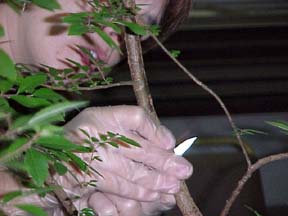
During the process of air layering, it is necessary to remove the bark, the
cambium,
and the phloem layer cutting away about a 1-inch wide ring of these tissues
from around the circumference of the tree. The layer just under the bark is a
layer of actively dividing cells called the cambium, the next layer of cells
called the phloem it is responsible for the transportation carbohydrates and
other photosynthates down from the leaves to the lower parts of the plant. The
layer beneath phloem is called the
xylem; it transports water and mineral nutrients from the roots and soil up to
the leafy parts of the tree. Removing the bark, cambium, and phloem prevents
carbohydrates and photosynthates from flowing down the trunk. It still allows
water and mineral nutrients to flow upward to the leaves via the channels in the
xylem, thus keeping the leafy portions of the tree from drying out and
maintaining them with an adequate supply of nutrients. Removing the cambium
layer prevents the regeneration of phloem and healing over of the wound, the
carbohydrates and photosynthates flow down the trunk and collect at the girdling
site. The presence of this excess of carbohydrates and photosynthates at the
girdling site, plus the presence of the water in the sphagnum moss, causes
dormant adventitious buds in the area to grow into roots.

Utilizing a sharp blade the area must be cut (ringed) continuously around the
limb or trunk and then repeated approximately (1) one inch above or below the
original cut, the larger the branch the greater the distance between the cuts,
The area between the cuts must then be removed by cutting or scraping, taking
care to NOT go to deep and cut into the xylem.
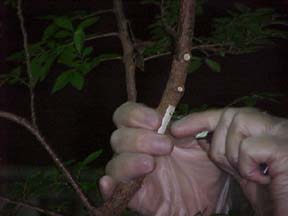
Taking the sphagnum moss that has been soaking in water, squeeze out minimal water and form a square pad 2-3 inches wide. Sprinkle the rooting hormone on the pad liberally and form the pad around the branch or trunk. Wrap the entire pad with the plastic.
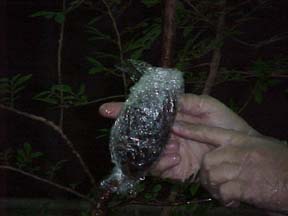
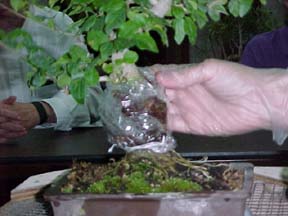
The top and bottom of the plastic must be tied securely with the bag-ties or wire to help hold in place and retain moisture. Be careful that no moss is exposed, this will act as a wick and cause maximum evaporation. Ensure that the upper tie is in a position that can be removed to inspect occasionally and add water as needed. Place the tin foil with the glossy side in over the entire air layer, forming it tightly to resemble a baked potato, this will help to ensure contact and prevent over-heating.
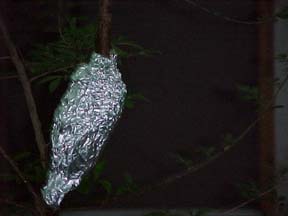
Depending on the species of tree, roots should normally start to show in 4-6 weeks, although many take longer and some shorter. By removing the tin foil and checking while you water you can observe the development. They will start, as little white nodules on the branch or trunk, be careful they are very fragile at this stage.
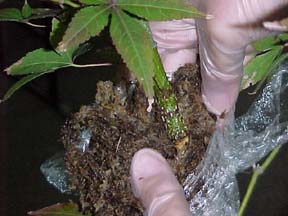
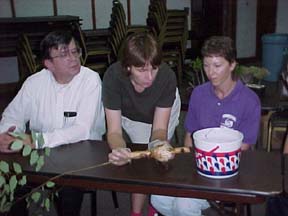
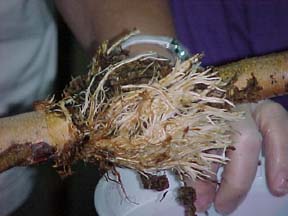
Here are also more results of air layering on one of her maples, the tree now has its second air- layer on it (note the potato). The first layer is shown already in its first potting.
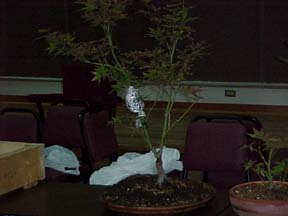
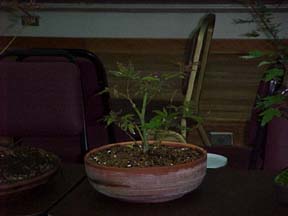
The Gainesville Bonsai Society thanks Lucy Skelley for her fine presentation illustrating the skills she has proven work for her and will work for anyone who is willing to try. Steve Chapman took these pictures at one of her demonstrations. This article is a collaborative effort by Steve and Lucy, both members of the Gainesville Bonsai Society.